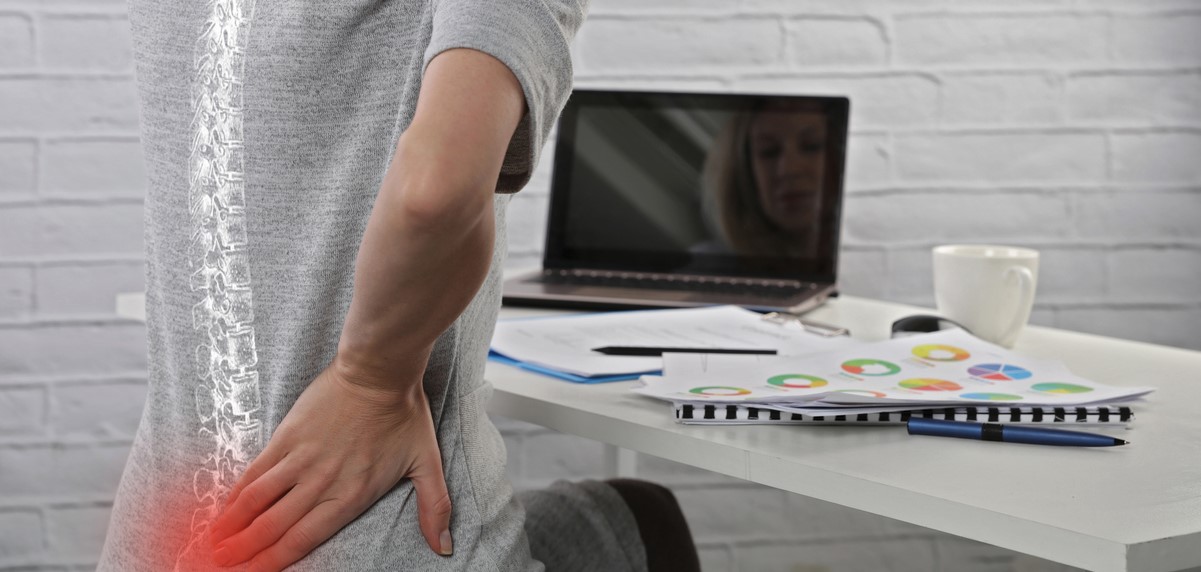[vc_row][vc_column width="1/1"][vc_column_text]By: Ellen Rossiter, PT
If you are someone who does computer work, then it's likely you tend to spend most of your day sitting, be it at your desk, at meetings, or sitting with clients. This also means that you’re likely spending a lot of time on your computer, on the phone, and in positions of reading and writing.
The resulting pain points for most people may include:
- Neck/Headaches
- Low Back/Hips
- Forearms/Wrists/Elbows
Although everyone is different, there is a posture we call Home Base, which is a position that allows most bodies to relax. To bring yourself to Home Base, remember the following:
- Sit tall and do not over arch your back
- Chin down, back slightly - no chin poking!!
- If you are at a computer, should see the top 1/3 of the screen when looking straight ahead
- Shoulders down and relaxed (not up near the ears)
- Arms hanging at sides, elbows at or lower than 90 degrees
- Wrists should be relaxed
- Back supported when possible
- Sit evenly on both “sit” bones
- Hips and knees at 90 degrees
- Ensure your feet are supported
Regardless of your posture, there is one thing to keep in mind. “Motion is lotion!” What that means is that you need to move throughout the day.
Movement is the most important thing to remember so:
- Shift positions frequently throughout the day
- Set a timer to remind you to move if necessary
- Crossing your legs in not evil…just don’t stay there all day
- Check in with your body and listen for pain points and tight areas that might need attention
Here are a few other things to think about when sitting down to work:
- Put books under your laptop if you're working with one to raise it up. Switch to both with and without books occasionally.
- Support your lower back with a rolled up towel or small blanket (Tip: Once you get your roll to the perfect size, put an elastic band on either end to hold your roll in place so you’ll always have it ready)
- If you don’t have an official work space if you’re working from home, then be sure to switch it up from the table to the kitchen island and anywhere else that might allow your body to not be stuck in one position for too long. You can have some positions that are sitting, and some that are standing.
If you’re experiencing pain that is resulting from your workspace, a session with a Physiotherapist can help you identify some simple changes that you can make that might make all the difference. A custom stretching routine for your specific pain points is something a PT can create to help you enjoy a pain free workday.
*This blog is not intended to officially establish a physician-patient relationship, to replace the services of a trained physician, naturopathic doctor, physical therapist or chiropractor or otherwise to be a substitute for professional medical advice, diagnosis, or treatment. [/vc_column_text][/vc_column][/vc_row]


